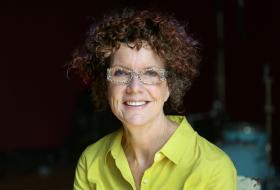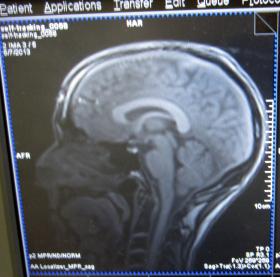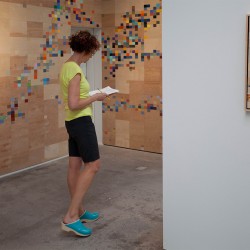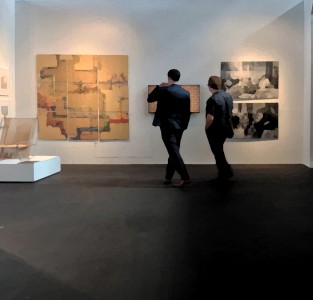At 7:30 am on pretty much any Tuesday over the past 8 months, you'd find Russ Poldrack lying on his back in front of the MRI scanner in his basement lab at UT, waiting to scan his brain.
Poldrack, a neuroscientist, runs the Imaging Research Center at UT-Austin.
I met him on the morning of his 58th scan.
“The first few times, I was quite anxious laying in there," Poldrack said. "But 50 times doing anything, you become more relaxed in doing it.”
Poldrack gets one of his regular Tuesday brain scans in the MRI machine in his basement lab. His assistant, Ashleigh Hover, runs the scanner.
All these MRI's are aimed at trying to answer a pretty fundamental question about all of us: How much fluctuation is there in a healthy brain over time? But also – how do those fluctuations translate into real things?
“So for example," said Poldrack, "how does that relate to my mood from day to day or how well I slept and also how does it relate to what’s going on in my body?”
Put simply: How do changes in our brains affect how we feel or how we act?
To find out, Poldrack is tracking virtually every aspect of his daily life. When he wakes up every morning, he takes his blood pressure, weighs himself and takes a survey about how he slept and how he's feeling that morning. Some days, he gets blood taken and analyzed. Each night he takes another survey to track what happened that day — what he ate, if he drank any alcohol or took any medicines.
Then there are the MRIs. He’s been doing at least two scans a week since September, with the exception of a brief hiatus this spring.
So why is Poldrack – the scientist – the one having his life tracked this way, instead of a test subject? Poldrack says the inspiration came from an artist by the name Laurie Frick, who's sort of an artist-in-residence at Poldrack's lab. Frick has been tracking herself for years and making art from the data. But she got started with a more practical purpose.

Credit Jorge Sanhueza-Lyon/KUT News
Austin artist Laurie Frick was one of the inspirations for Poldrack self-tracking study.
“I’d been having these stomach aches on and off for years and years and years," Frick said. "And I thought ‘alright, I’ll start to score it every day.’”
She used an app to track what she ate, what she did each day and some other factors. “And after about a year I decoded it," she said. "By tracking it, I figured out what were the causal effects of an upset stomach.”
And in a sense, that’s just what Poldrack is doing. He's tracking little things to try to get big answers.
After his MRI, Poldrack takes his blood pressure for the second time that day. Then, over to a computer to use an online form to answer a few dozen questions about his mood. Is he feeling proud? Shy? Bashful? Frightened? Poldrack rates himself for each on a scale of 1 to 5.
Let’s say he's feeling a little blue one day. The idea is to compare his brain scans from that day to ones from days when he’s feeling happy or just neutral.
Can you actually see something in his brain has changed?
But shouldn’t a real-deal scientist be doing this a little more by the book? Test subjects, control groups – you know, a real study?
Poldrack says there’s just one problem with that.
“Imagine expecting volunteers to come in off the street, say, once a week for a year…have their brain scanned, have blood drawn…that’s a really hard study to expect people to take part in.”
Poldrack is hardly the first scientist to use himself for an experiment.
A few years ago, Trevor Norton, a retired professor of marine biology, wrote a book called Smoking Ears and Screaming Teeth. And it’s about the long history of scientists who made big discoveries by experimenting on themselves. “Isaac Newton in the 16th century…John Hunter in the 18th Century...it was an American dentist [Horace Wells] who was the first one to try anesthetics properly.” One of the inventors of the MRI tried out an early version of the machine (unsuccessfully) on himself.
And while Poldrack isn't trying a new medical tool or taking some untested drug, there’s something idealistic about what he's doing. It’s the kind of science you don’t see much of anymore.
“It’s not a matter of getting really good data," said Norton. "It’s ‘Who goes first?’”
After the MRI and the blood pressure and the mood survey, Poldrack goes to get some blood drawn. It will be analyzed to isolate the RNA — which carry the blueprints to make proteins. The results of the analysis will tell him which of his genes are being expressed that day. Then, he can compare that to all the other data to see if it corresponds to any changes in brain.
Whatever he learns is obviously just a first step. The idea is to find specific questions to ask in the future.
"Whatever we find in this study will really provide us sort of places to look," Poldrack said.

Credit Matt Largey/KUT News
An image of Poldrack's brain from an MRI on May 7, 2013.
Those questions are already starting to take shape. A little more than halfway through, Poldrack is seeing some patterns emerge.
“For example, we see some relationships across days between my general positive mood and brain function," he said. "We also see some relationships between my blood pressure on those days and brain function. So we’re starting to see some patterns. There’s still a lot more to do, because we need a lot more data.”
Poldrack will keep collecting data on himself at least through the end of the year. After that, he’s hoping to find some brave volunteers to take his place in the MRI machine.








